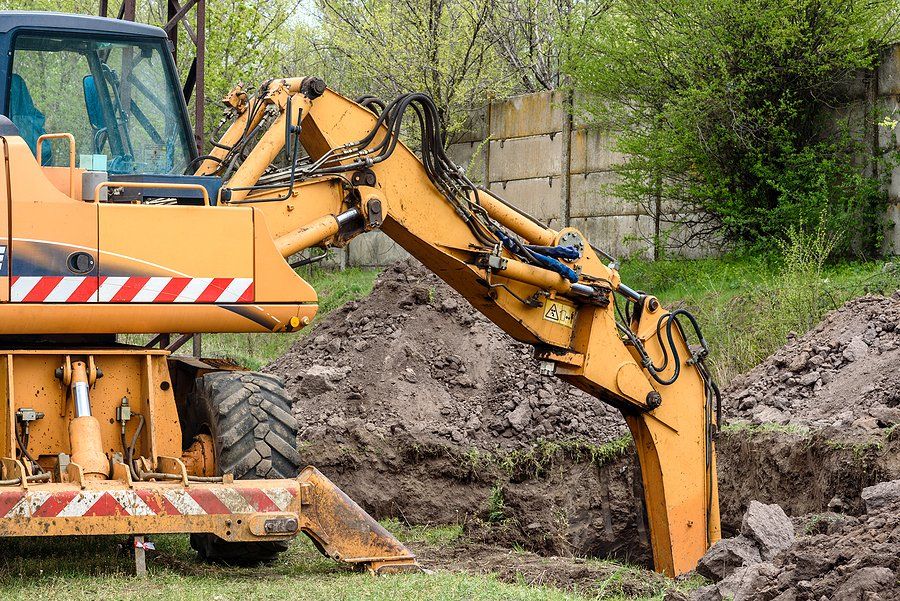Halifax Excavating Pros
Septic Tank Installation Halifax NS
One of the services we're proud to provide at Halifax Excavating Pros is septic tank installation.
A septic tank system serves as a vital part of managing wastewater for properties, particularly in rural settings where connection to a central sewer system is not an option. This subterranean waste treatment mechanism effectively and safely handles waste from your residence.
Our role as septic tank installation specialists is to guide you through the essential steps of septic tank installation, ensuring you receive a dependable and effective system for years to come.
Step 1: Assessing Your Property and Securing Permits
Before initiating the installation process, you must first establish whether a septic tank is the right choice for your property. Similar to any civil construction project there is a lot of red tape. Begin by assessing your land's dimensions, soil composition, and terrain, as these factors significantly influence the type and size of the septic system needed.
Upon determining that a septic tank is appropriate for your property, you will need to secure the required permits from your local health department or other pertinent authorities. They will direct you through the process and supply specific requirements and regulations that you must adhere to.
Step 2: Choosing the Ideal Septic System
Numerous septic system options are available, each with its unique advantages and disadvantages. Conventional systems, chamber systems, and advanced treatment systems are among the most common types. Consult a septic system specialist to select the best choice for your property based on factors like soil composition, water table levels, and proximity to water sources.
Step 3: Planning the Septic System
After selecting the suitable septic system for your property, the next step is to develop a detailed plan. A certified septic system engineer will assist you in designing the layout, including the septic tank's location, the leach field or drain field, and any extra components like pumps or filters. Additionally, the design should consider the size of your house and the expected wastewater output, ensuring the system can manage the demands placed on it.
Step 4: Excavation and Installation
Once the necessary permits are acquired and your septic system is designed, the excavation process can begin. This entails digging a properly-sized hole for the septic tank and trenches for the leach field. During this process, it is vital to adhere to the design plan and all local regulations, regardless of how trivial they may seem.
After completing the excavation, the septic tank and any additional components can be installed. Collaborate with a trustworthy contractor experienced in septic system installations to ensure accurate placement and compliance with safety standards.
Step 5: Connecting the Septic System to Your Home
With the septic tank and leach field installed, the system can now be connected to your home's plumbing. This requires running the primary sewer line from your house to the septic tank inlet, guaranteeing a watertight connection. Furthermore, you might need to install a pump or other equipment to enable the wastewater flow from your home to the septic tank.
Step 6: Backfilling and Landscaping
Once the septic system is connected and functioning correctly, the area surrounding the tank and leach field needs to be backfilled with soil. This stabilizes the components and prevents potential damage caused by erosion or ground movement. It is crucial to use the appropriate soil type and follow the recommended compaction methods to ensure your septic system's long-term stability.
After backfilling, you can start landscaping around your septic system. Bear in mind that certain plants and trees are not suitable for planting near a septic system, as their roots may damage the tank or leach field. Consult a landscaping professional before completing the installation.
Step 7: Routine Maintenance and Inspection
A well-installed septic system necessitates regular maintenance and inspection to ensure peak performance and prevent expensive repairs. Be proactive and establish a routine maintenance schedule, which should include tasks such as:
- Pumping the septic tank: Depending on your tank's size and household usage, you should have your septic tank pumped every three to five years on average. Pumping prevents the buildup of sludge and solid waste, which can clog the system and cause malfunctions. Don't overlook this essential step.
- Inspecting the drain field: Periodically examine the drain field for signs of standing water, unpleasant odors, or excessive vegetation growth. These signs can indicate that the system isn't functioning correctly and may require expert intervention.
- Monitoring water usage: Keeping track of your household's water consumption can help extend the life of your septic system. By using water-saving fixtures and appliances and avoiding overloading the system with excess water, you can maintain its efficiency.
- Checking for signs of damage: Regularly inspect your septic system components for damage indicators, such as cracks or corrosion. Early detection is crucial for preventing more significant and potentially costly issues in the future.
- Scheduling professional inspections: In addition to your routine maintenance, it's wise to have a septic system professional inspect your system every one to three years. They're trained to identify potential issues and ensure your system runs at peak efficiency.
The installation of a septic tank system is a considerable investment in your property's long-term wastewater management. By following the steps outlined here, and working with experienced professionals, you can ensure a successful installation and enjoy the benefits of a reliable, efficient septic system for years to come.
Remember that regular maintenance and inspection are vital to your septic tank's longevity and performance, so develop a routine schedule and stay vigilant in monitoring your system. Give us a call today and we can start working on the solution for your septic tank installation.



